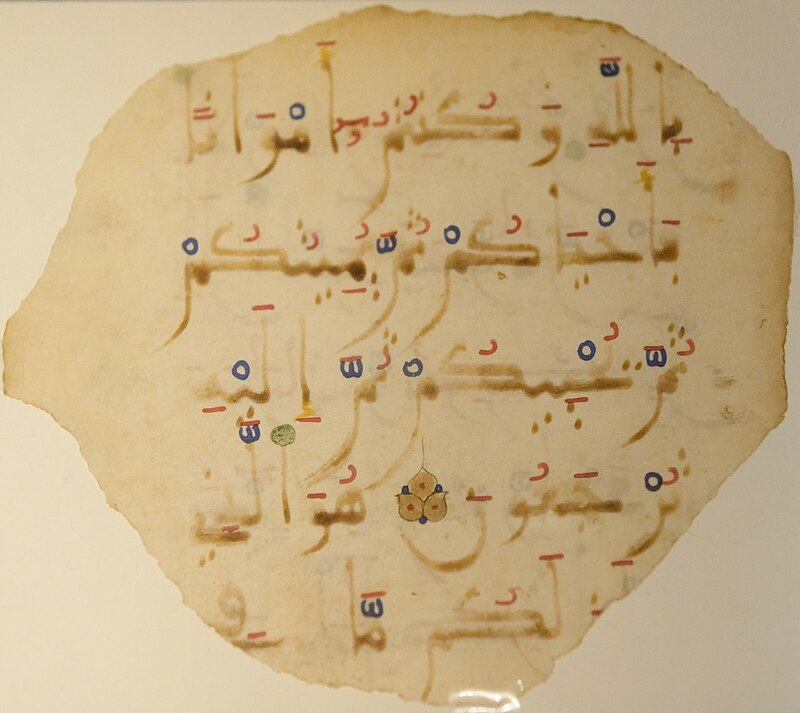Qur'an on fish skin
Type:
Qur'ans,
Illuminated manuscripts
Date:
Eleventh century
Location or Findspot (Modern-Day Country):
Mali
Medium:
Lapis lazuli
Description:
This fragment comes from a Qur'an that was written on fish skin in North Africa but then carried to Timbuktu along one of the western Saharan trade routes of the Middle Ages. The introduction of Islam into sub-Saharan Africa was largely the result of Muslim traders journeying to the Sahel, the grassy savannah south of the Sahara. "Sahel" comes from the Arabic word for "coast" or "shore"—an indication of how Arabic-speaking traders viewed the Sahara as an ocean to be navigated. Along with the gold and other commodities that moved along the trans-Saharan trade routes were religious books such as this one. Pigment analysis of the fragment in 2015 confirmed that the blue in this Qur'an is lapis lazuli, a semiprecious stone mined exclusively in Afghanistan. This artifact therefore represents multiple phases and types of exchange, both material and religious.
Relevant Textbook Chapter(s):
6
Repository and Online Resources:
• Read more about this and other manuscripts in Timbuktu.
• Read about the material analyses of Malinese manuscripts.
Image Credits:
Wikimedia Commons
Tags:
North African,
Sub-Saharan,
Access to the sacred,
Arabic,
Qur'an

